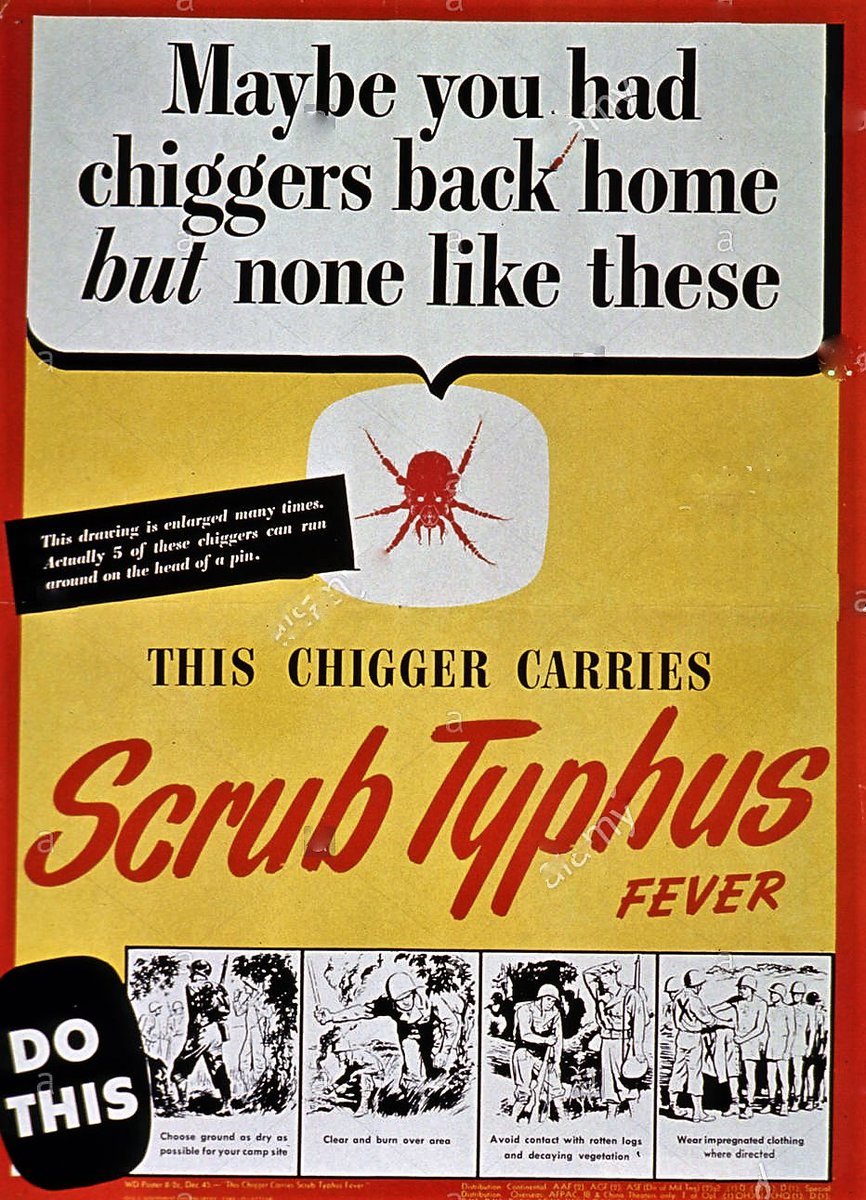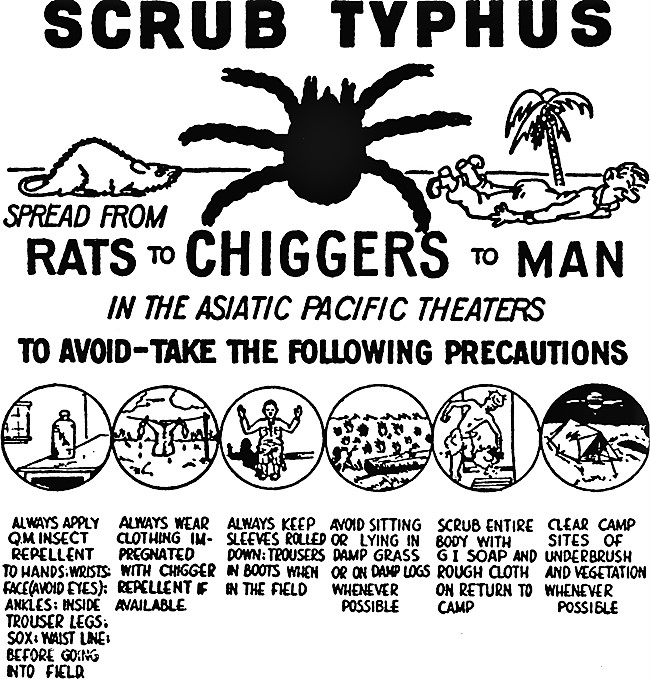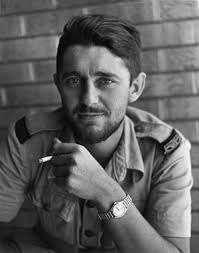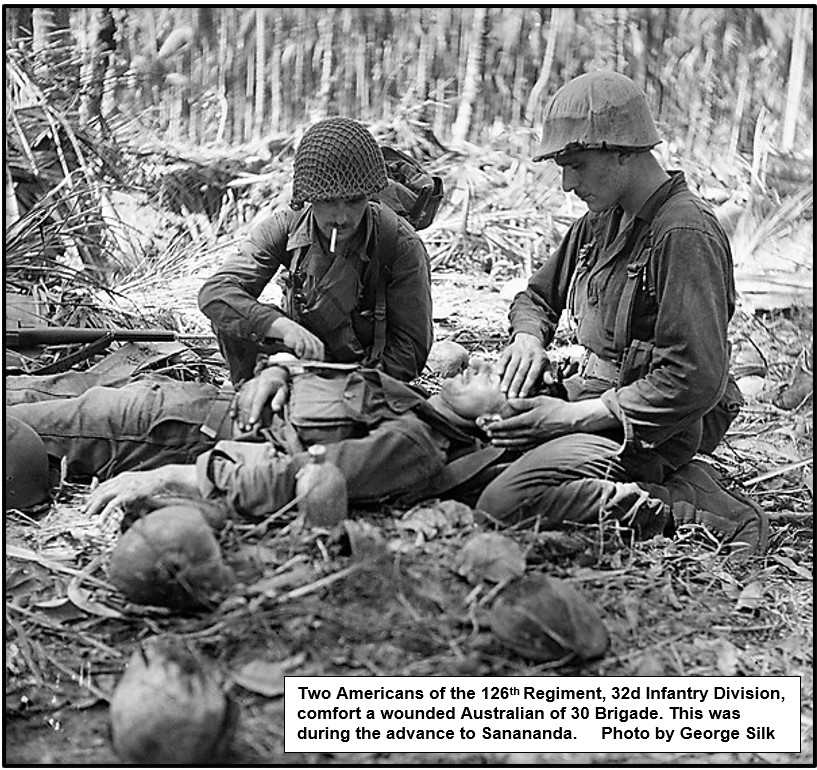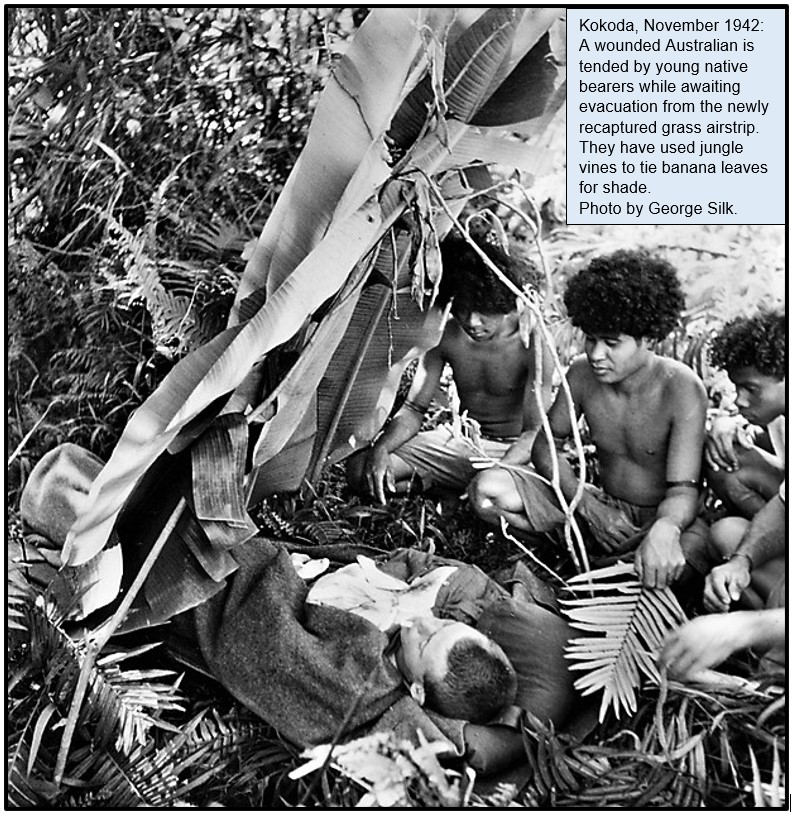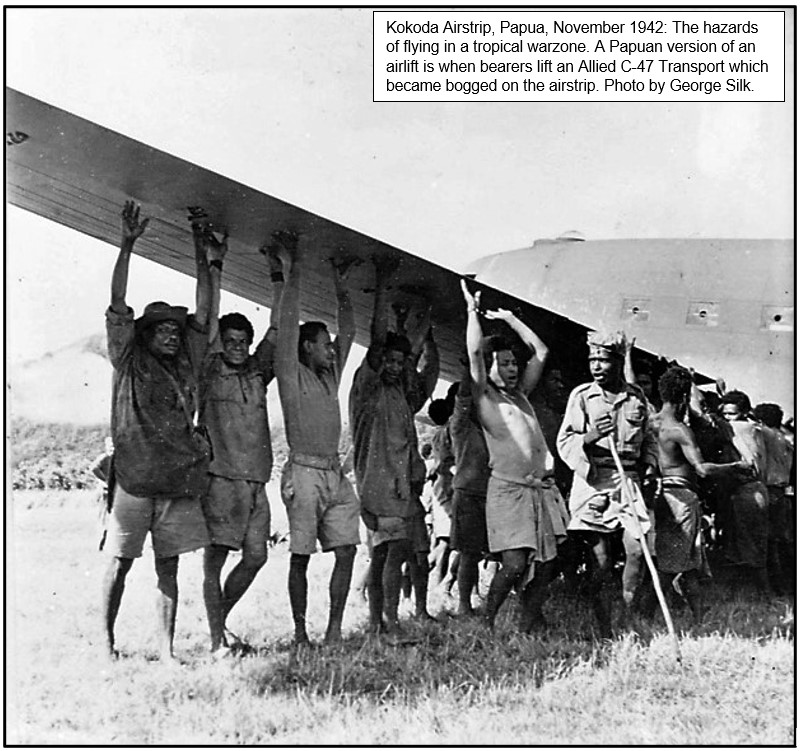Dec 25, 1942:
George Silk’s iconic photograph of local Orokaiva villager Raphael Oimbari escorting Pte George Whittington during the battle for Buna Station.
Silk had returned from Libya after being captured for 10 days by the Afrika Korps while covering the fighting there.
1/10
George Silk’s iconic photograph of local Orokaiva villager Raphael Oimbari escorting Pte George Whittington during the battle for Buna Station.
Silk had returned from Libya after being captured for 10 days by the Afrika Korps while covering the fighting there.
1/10
George Whittington recovered from his wound and soon returned to his unit during the Battle of Sanananda, ending 21 January 1943.
Around this time he contracted scrub typhus. At that time there was no known cure.
Scrub typhus is nowadays easily treated with an antibiotic.
2/10
Around this time he contracted scrub typhus. At that time there was no known cure.
Scrub typhus is nowadays easily treated with an antibiotic.
2/10
The first easily attainable artificial antibiotic, Doxycycline, was not invented nor clinically developed until the early 1960s.
George was flown to Port Moresby.
On February 12 he died and was buried, like so many of his comrades, in Bomana War Cemetery, near Port Moresby.
3/10
George was flown to Port Moresby.
On February 12 he died and was buried, like so many of his comrades, in Bomana War Cemetery, near Port Moresby.
3/10
Silk, suffering from malaria, had been walking towards the raging battle.
Seeing two silent figures slowly walking towards him, he stepped aside and took the shot as they passed.
Nobody spoke.
No one except George knew the moment had been captured and recorded for posterity.
4/10
Seeing two silent figures slowly walking towards him, he stepped aside and took the shot as they passed.
Nobody spoke.
No one except George knew the moment had been captured and recorded for posterity.
4/10
Silk collapsed later that day due to malaria.
He was thought to be dead.
He was evacuated to hospital and returned to Sydney. He had never seen the photographs, as his film was sent back to Australian authorities.
A young lady unofficially let George view some of his photos.
5/10
He was thought to be dead.
He was evacuated to hospital and returned to Sydney. He had never seen the photographs, as his film was sent back to Australian authorities.
A young lady unofficially let George view some of his photos.
5/10
For various reasons, the Australian Dept of Information refused to publish Silk’s images for almost two months.
He obtained copies of some of them, showing them to US military authorities.
The Americans authorised them to be sent to the US, despite the Australian authorities.
6/
He obtained copies of some of them, showing them to US military authorities.
The Americans authorised them to be sent to the US, despite the Australian authorities.
6/
Time/Life published the Oimbari picture.
Aust& #39;n authorities were furious, tried to discipline him, but finally agreed to release him to a career with Life magazine.
The photo became iconic.
He married an American nurse and lived in Westport Connecticut until he died in 2004.
7/10
Aust& #39;n authorities were furious, tried to discipline him, but finally agreed to release him to a career with Life magazine.
The photo became iconic.
He married an American nurse and lived in Westport Connecticut until he died in 2004.
7/10
Oimbari was one of 14 men of his village to work as a carrier.
From July-Nov 1942 they’d worked for the occupying Japanese.
In total almost 60,000 Papua New Guinean villagers helped the Allies immensely in the combat supply and evacuation of wounded during the PNG campaigns.
8/10
From July-Nov 1942 they’d worked for the occupying Japanese.
In total almost 60,000 Papua New Guinean villagers helped the Allies immensely in the combat supply and evacuation of wounded during the PNG campaigns.
8/10
Oimbari’s children had died during the war’s hard times. He began a new family.
30 years later his identity became known.
He made many trips to Australia representing PNG’s WW2 stretcher-bearers, porters & labourers.
He met and was thanked by Whittington’s widow and veterans.
9/
30 years later his identity became known.
He made many trips to Australia representing PNG’s WW2 stretcher-bearers, porters & labourers.
He met and was thanked by Whittington’s widow and veterans.
9/

 Read on Twitter
Read on Twitter
